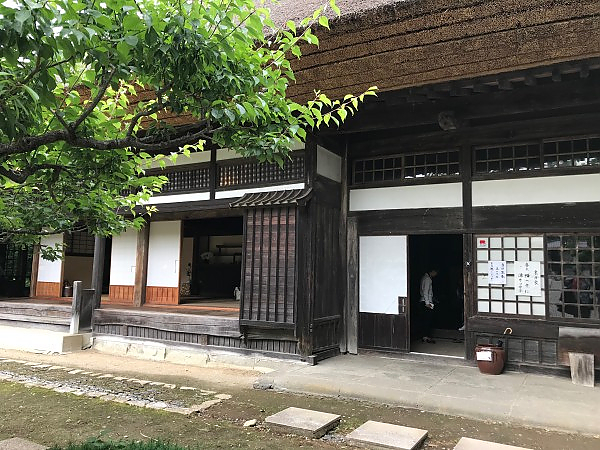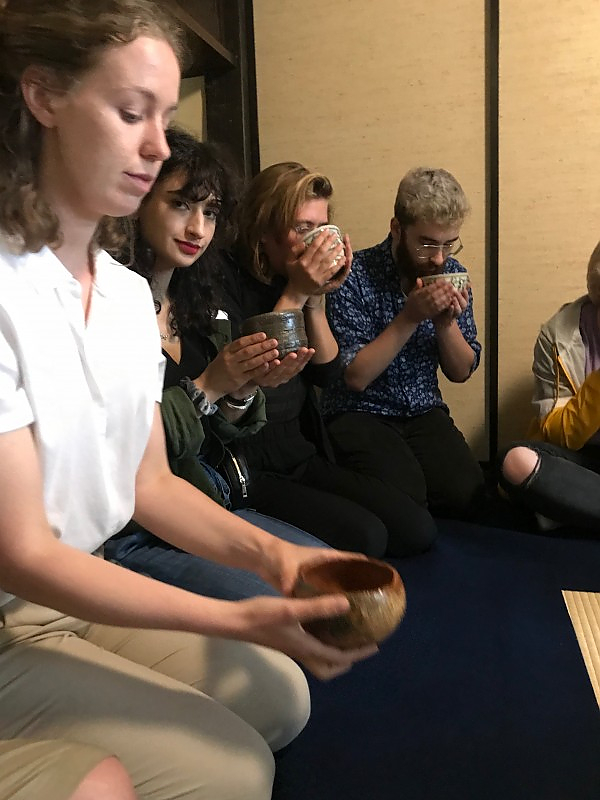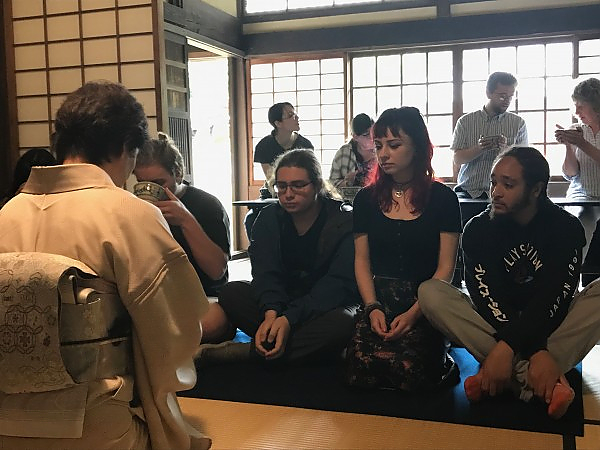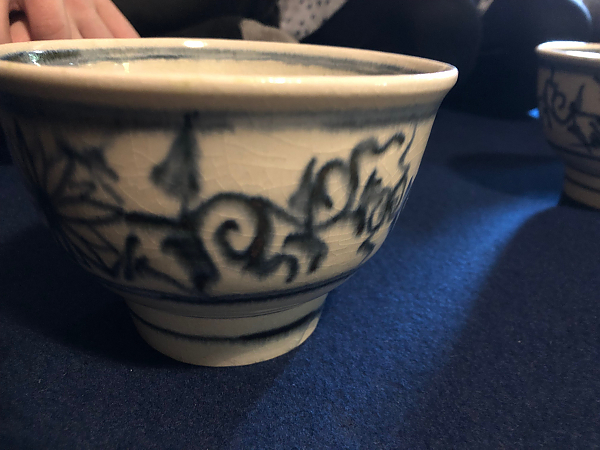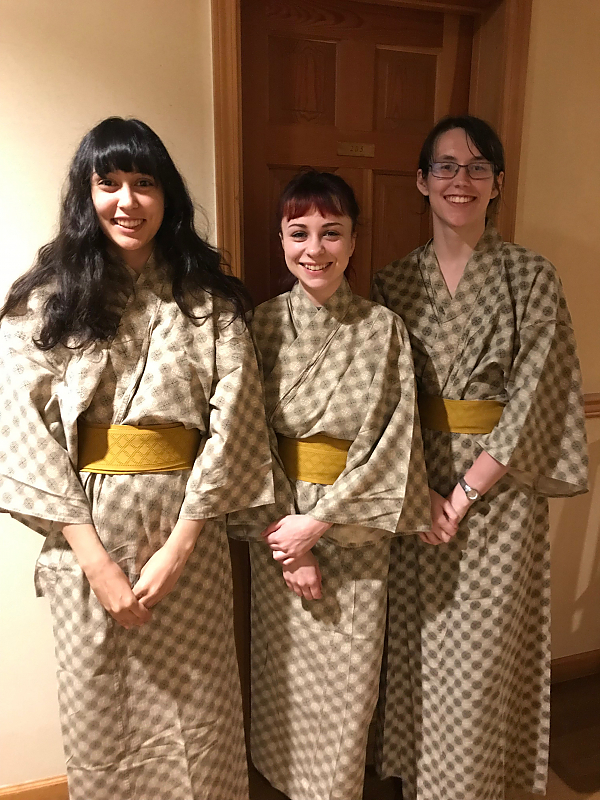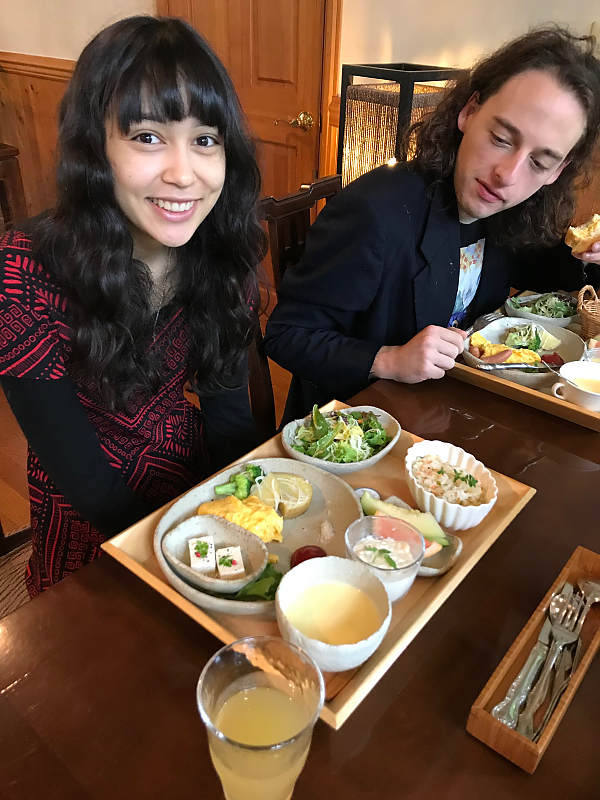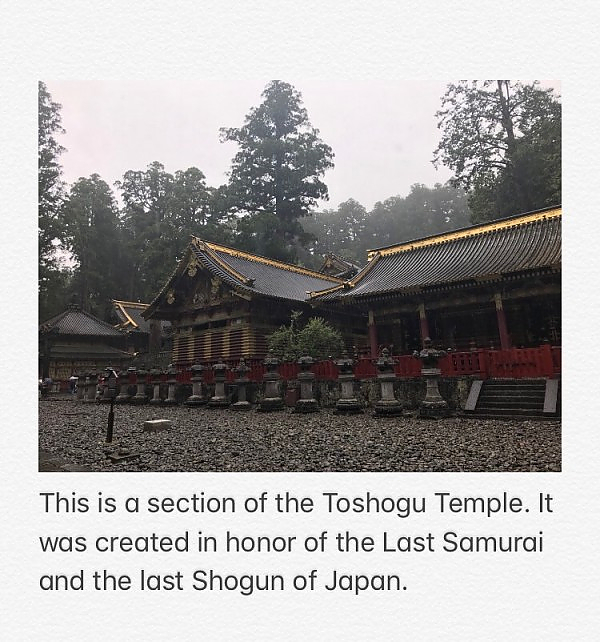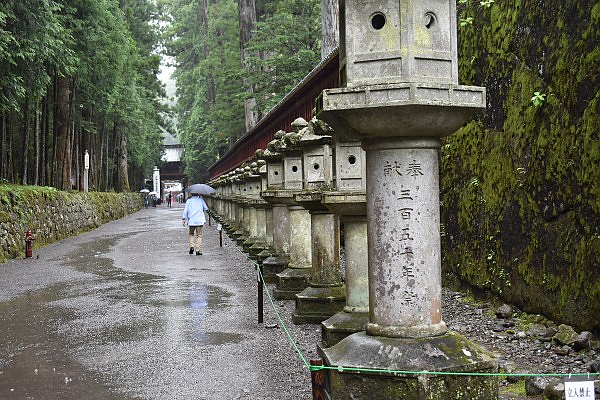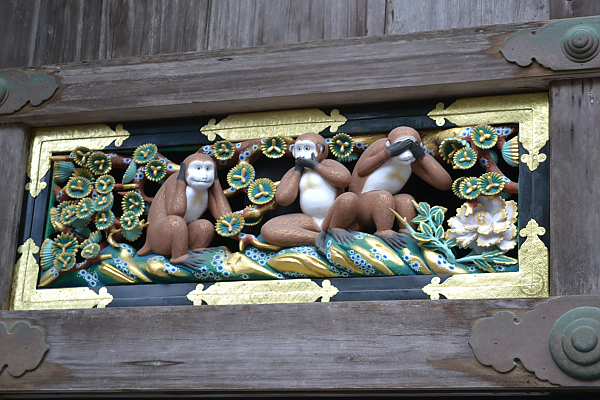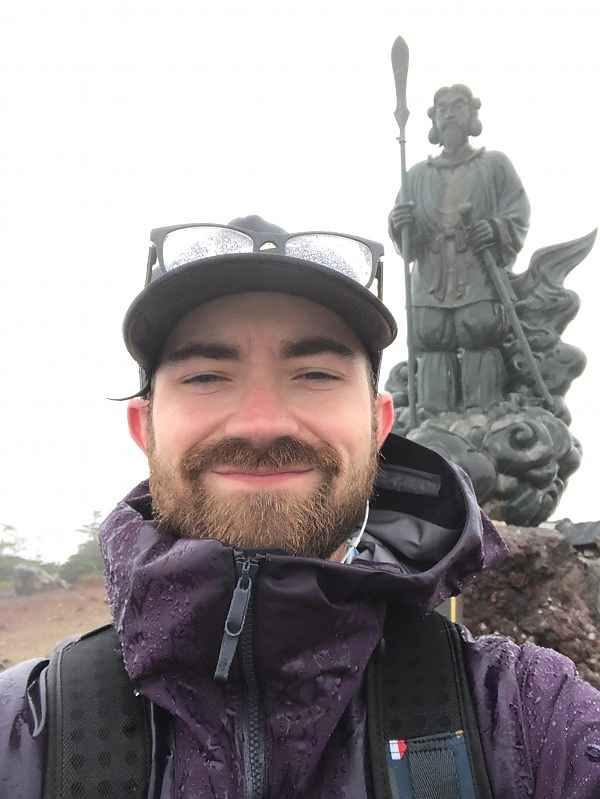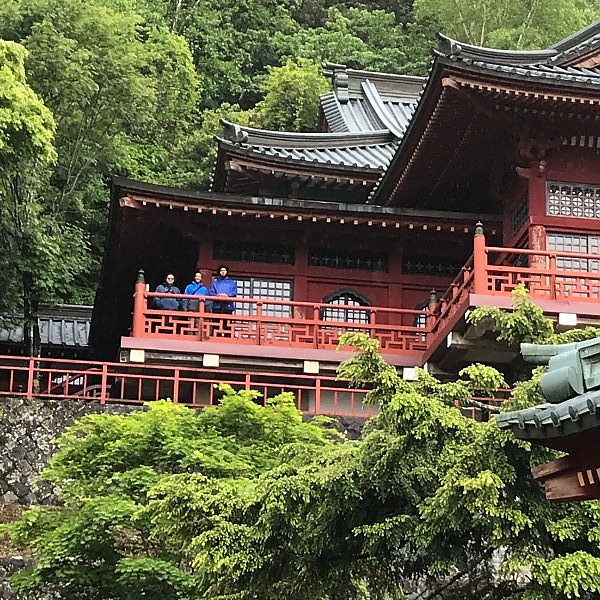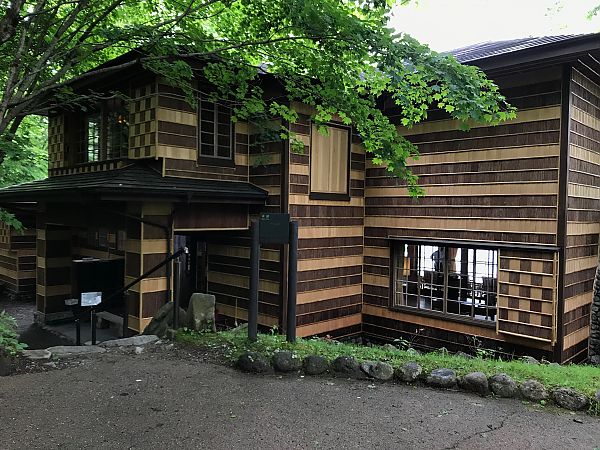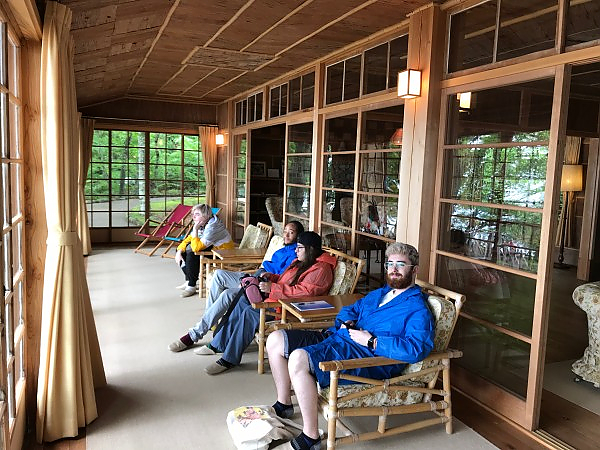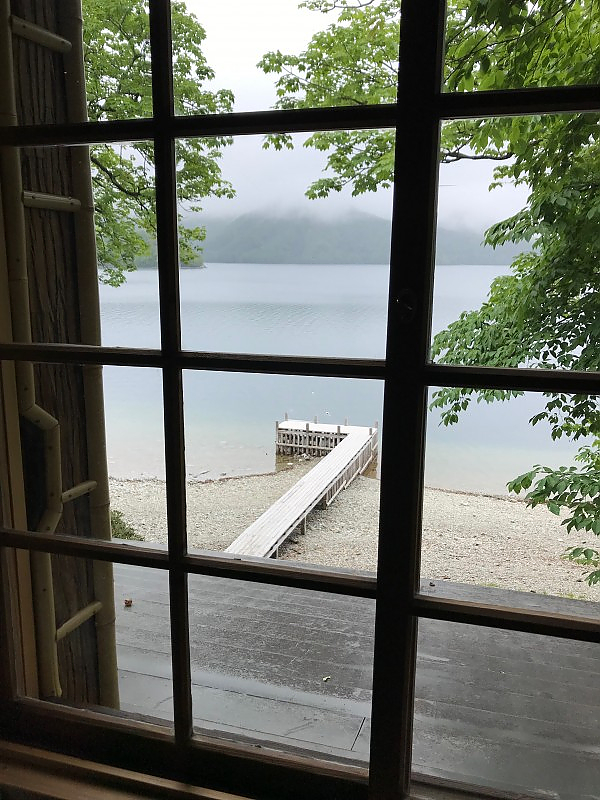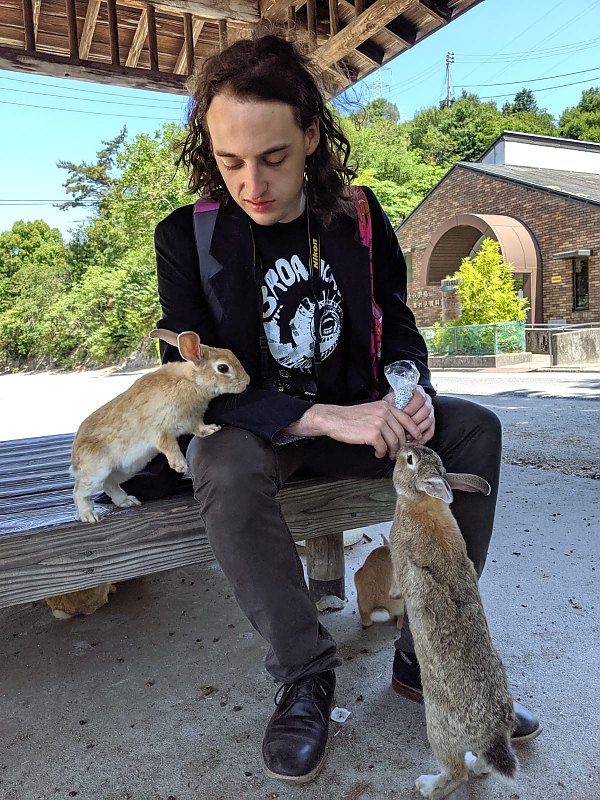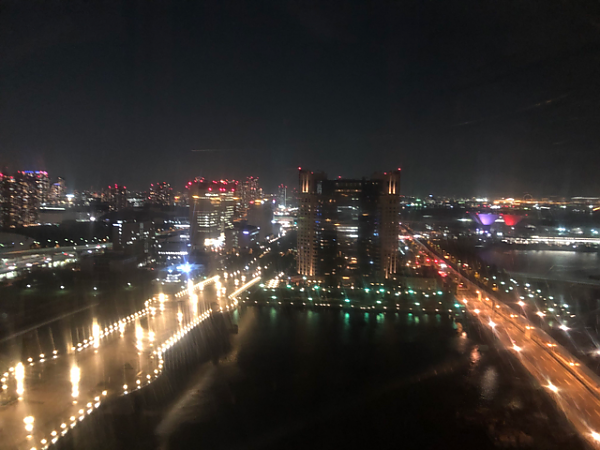Mashiko and Nikko: A Pottery Village and a National Historic Treasure
After two weeks in the busy metropolis of Tokyo we were all excited to head for a more rural area of Japan. We used four trains to reach Mashiko, including this small one-car train on the Moka Railway.
Mashiko is a small pottery village known internationally as the home of Shoji Hamada, Japan's first "National Living Treasure", recognized for his infuence on studio pottery in the 20th century. We were extremely fortunate to be able to experience a tea ceremony being held in Hamada's home, which was moved to the grounds of the Mashiko Museum of Ceramic Art in 1989. Ceramic students were particularly excited to visit all of the pottery shops.
Hamada's home where the tea ceremony took place.
From Mashiko we traveled over an hour on a local bus to Utsunomiya where we caught one last train to Nikko. There we were pleased to find our inn, Nikko Akarinoyado Villa Revage. It was a wonderful place with a very friendly innkeeper who went out of his way to make our stay enjoyable even though it rained all day on Monday! The students loved wearing their traditional robes inside the inn and as they went outside to the ofuro, or Japanese bath.
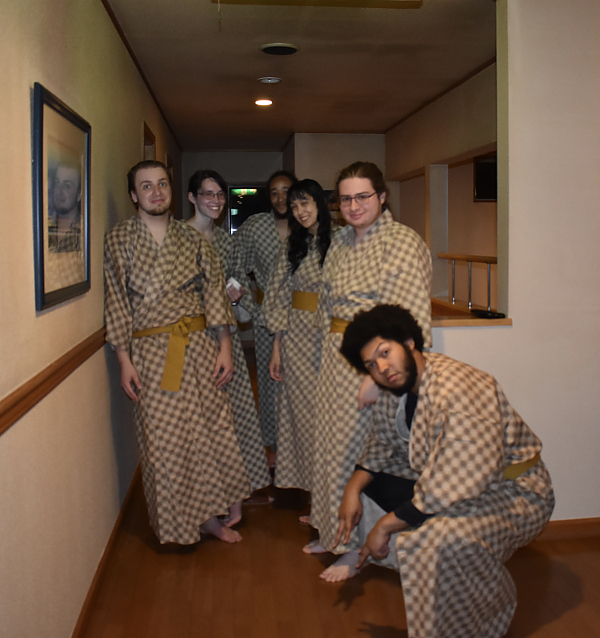
Photo by Annie Goldberg
The breakfast each morning was memorable, particularly for students with dietary restrictions that were amazed to find that the inn had created a full breakfast that they could eat!
Many students visited the Toshogu Shrine on Monday and experienced its beauty in the rain.
Photo above and caption by Vecus Mitchell
Photo by Kwawe Baker
Photo by Christie Herbert
One student climbed Mt. Nantai (2,486 meters high), and although he wasn't able to take advantage of the view, Dan was thrilled to complete the hike and return to the inn ready for a hot bath!
Photo by Dan Lougen
On Tuesday the weather improved. So before leaving for Tokyo, some students returned to the shrines and temples while a smaller group went to Lake Chuzenji, where they visited the Chuzenji Tachiki Kannon temple, as well as the Italian Embassy Villa. Unfortunately, the famous Kegon Falls was completely fogged in, but we still enjoyed the chance to walk along the lake and experience some of the natural beauty that attracted earlier foreigners to the area.
Relaxing on the sun porch of the Italian Embassy Villa.
View of Lake Chuzenji from the Villa. The natural surroundings reminded us of a lake in New England.
Many of the students were interviewed by a national TV show as we waited to take the train back to Tokyo. Here's Luke and Kwawe.
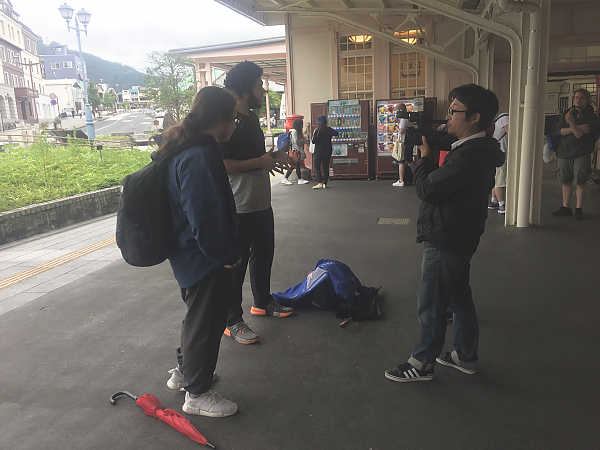
Finally we returned "home" on Tuesday, travelling by bullet train from Utsunomiya to Tokyo. Students have been busy finishing up their final projects and buying last minute gifts and souvenirs before our farewell dinner Friday night.
A number of students had special interests in seeing or experiencing something in particular. For example, Gabe is a fan of a Japanese show called Kantaro, The Sweet Tooth Salary Man. He was successful at finding the actual shop where the first episode was filmed and ate the same sweet dessert as featured in the show.
Two students fulfilled a childhood dream of visiting Okunoshima, or Rabbit Island.
Photo by Max Cornell
Photo by Anais Sidonia
Several students visited Japanese friends they had made in the U.S., and Abby found a very large ferris wheel with a great view of Tokyo at night.
Photo by Abby Jones
Before closing our last blog, I'd like to share some writing from two of the students that will give you a taste of some of what students learned from the course, the Intersection of Art and Culture in Japan, taught by Christie Herbert. First a selection from Rhiannon Greywolf:
"From sculpture and silk screens to swords and rock gardens, an articulate amount of care is taken to these mediums that is strictly Japanese. From a single fluid, black brush stroke of ink to gently imply a form, to the subtle handiwork of an asymmetrical piece of pottery, the Japanese value process over product— or rather the process is what informs the history and meaning of the end product. Much like the understandings and relishing of beginnings and endings, not climactic sequences that create something flashy but loses flair over time. Japanese art is timeless and this is thanks to their aesthetic principles."
And finally a selection from an essay by Anais Sidonia:
"I can only describe my experience of visiting the bamboo forest in the Hōkoku-ji temple as an ineffable one. The location felt secluded from the rest of the world around it and seemingly faded into the hills and mountains as many Japanese art pieces often depict. The simplistic forest of bamboo was as beautiful as the vibrant gardens surrounding it, and the contrast between the two settings in the same location encapsulated the heart of Japanese art aesthetics.
While we were at the temple, we got to sip matcha tea as we looked out over the beautiful bamboo forest. To get to the tea-drinking platform, we walked across a narrow, raised path of flat circular stones and slabs of rectangular stone, surrounded by tall stalks of bamboo. The path led to a small hut, where one side was open-faced and had a long ledge to drink tea while seated at benches overlooking the forest. It was a wonderful experience to meditate by means of silently sitting and reflecting on the indescribable beauty of my surroundings, much like the Soto sect of Zen medication, which focuses on zazen. I connected deeply with the feeling of mono no aware, appreciating the transience of my emotion and experience, as well as of the short-lived freshness of the early summer season. Although I could only spend ten fleeting minutes soaking in the elegant beauty of the simplistic forest sounds and sights around me, it felt peaceful and somehow even more meaningful."
And with that we say sayonara and look forward to seeing you all in just a few days back home. Thank you to all who followed our journey. We hope you enjoyed our blog and welcome your comments.

